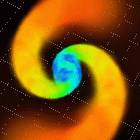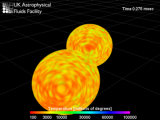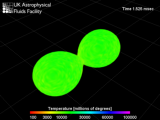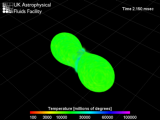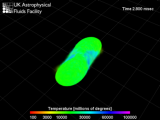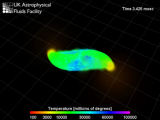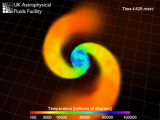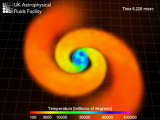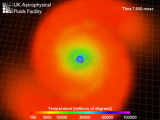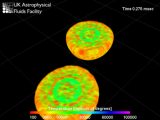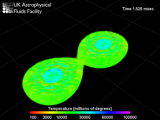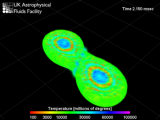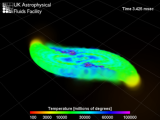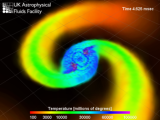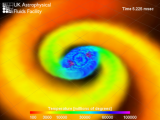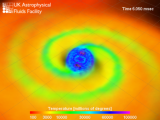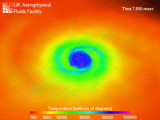MERGING NEUTRON STARSThe following movies and still images were created from calculations performed on the UKAFF supercomputer showing the merger of two neutron stars.At the start of the simulation the two stars (each 1.4 times the mass of The Sun, but less than 30 kilometres in diameter) are less than 10 kilometres apart, and moving at around 20% of the speed of light (over 200 million miles per hour). As the two stars spiral together they become deformed, and finally touch. As they merge the matter reaches unimaginable temperatures (1011 Kelvin, or 100 thousand million degrees). A few percent of the matter is ejected in the form of spiral arms, which cool rapidly. It is in these arms that the important nuclear physics takes place which creates heavy elements (for example gold, uranium). The whole merger process takes only a few milliseconds, and in this short time shines brighter than the rest of The Universe put together. The grid in the movies has a spacing of 30 kilometre intervals.
Still imagesClick on the images below for a larger version
| |||||||||||||||
